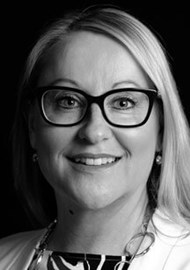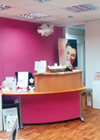As the unprecedented impact of the COVID-19 pandemic continues to be felt, many aesthetic practitioners are facing an uncertain future. In this invaluable article Pam Underdown provides expert advice on how to survive and grow stronger than ever.
The global financial crisis of 2008 took its toll on my very first aesthetic business, and left me facing the big question – “where on earth do I go from here?” Perhaps you are asking yourself the same question in the current climate.
But 2008 was also a defining year in my life, and the reason why I do what I do today – helping aesthetic clinic owners and practitioners avoid the same painful, expensive mistakes that I made.
Over the years I have learned that there is no silver bullet, no magic wand, and no short cuts if you want to transform your business, your profits, and your future. It requires a great deal of hard work and you will be facing unexpected challenges every day as you adjust to new ways of working, new competitors, and the ever-changing forces of supply and demand.
So, let’s switch from the stresses of a global pandemic to the opportunities that exist for you to emerge with a business stronger than ever. In this article, we are going to focus on getting you back in the game with an eight-point plan of action for growing your patient base. If executed properly, it will take you to a level beyond where you were before the pandemic.
Your first priority before you spend a penny on paid marketing and advertising is to explore how to get new patient bookings for free.
1. Check in with your unconverted leads
We all like to look for and enquire about new products and services, but we don’t always take action and buy straight away. Sometimes it happens weeks and months down the line. Especially in aesthetics.
A very useful exercise is to go back over the last 12 to 18 months and make a list of all the people who expressed an interest in what you do, but never actually made a purchase. For example:
- Who had a consultation but then you never heard from them again?
- Who had a consultation but then decided it wasn’t the right time for a treatment?
- Who booked a consultation but then cancelled?
- Who called the clinic but didn’t book a consultation?
- Who had conversations with you via text, WhatsApp, email or social media but never booked?
What you have now is a list of people who sought you out, but for whatever reason, decided not to take the next step. It’s time to reach out to them again . . . why? Because people’s circumstances can and do change. Some people may have access to more disposable income today than they did a year ago. Reach out to all of them, ideally by telephone. This is not a ‘sales’ call, it’s a friendly ‘check-in’ to find out how they are and let them know that you’re still here. Re-engage them on your previous correspondence and invite them to take the first logical step in the process - whatever that might be – perhaps a virtual consultation? Or a complimentary skin health assessment? Trust me, you’ll be pleasantly surprised at the response.
2. Maximise referrals
Most businesses rely on ‘hope’ referrals – the ones that happen by accident, simply because they are not being proactive when asking for referrals. You need a system in place, along with a referral culture that ensures everyone understands that referrals are a core part of how you grow your business. Imagine if every person brought one new person into your business each week, you would never have to do any marketing again.
In order to maximise referrals in the new economy, you should have a formal written referral process in place to ‘equip’ happy patients for making referrals – making it easy and simple for them. Create cards and flyers, get it out there, talk to patients about it – make it part of your checkout process. Don’t just assume they will tell others, as most people will simply forget.
Make your referral programme as compelling as possible for the patient who refers, and the patient who is referred, but be very careful about what incentive you are offering the referrer if you are a medical practitioner. Draw up a list of T&Cs (e.g. minimum spend applies, selected treatments only, etc).
3. Test Google ads
Google, as I’m sure all of you are aware, is the best way to get your website in front of somebody who is proactively searching for a specific treatment or clinic or practitioner in your area. When done right, you should get a steady stream of reliable and high-quality leads, simply because people who are proactively searching have a high level of intent and a high level of interest.
So, why is now a good time? Because some of your competitors, particularly larger clinics, have reduced or stopped their Google ad spend during the pandemic. This means that it could potentially be cheaper than it was before, as there is less competition. Why not test it by spending a small amount to see what results you get and then scale up or down accordingly?
If you’ve never tried Google ads before, you have two options: Learn how it works and then do it yourself, or learn the basics of how it works and then hire an expert to do it for you.
The key point is this: either way, you should learn how it works, because when you hire somebody to do it for you you’re getting into a partnership and they’re going to expect you to know the fundamentals, to speak their language, in the same way that you would expect them to know a bit about aesthetics, what you do and who your patients are, how you handle them, how you communicate to them, and the things that you can and can’t do from a regulatory perspective.
4. Get to grips with Facebook ads
Again, you should really learn this as well before you outsource it. From a technical perspective, it’s a little bit more complex than Google ads, but worth getting to grips with.
When done properly, Facebook ads have proven to be the cheapest source of new patients for many of our clients. Facebook ad campaigns are not as predictable and sustainable as Google ad campaigns, but what it lacks in predictability it makes up for in reach and volume, as long as you’re willing to experiment with your ads and change them every few weeks to maintain engagement. Many businesses don’t have the time or patience for this and have since stopped advertising on Facebook, meaning there is now less competition for attention, so its well worth testing on a small scale.
5. Take stock of your social media profiles
Look at your social media channels from a patient’s point of view:
- How well do they portray you as a credible practitioner who has valuable insights to share?
- What are you doing to continually reassure people that you are safe, trustworthy, and credible?
- How often are you updating your audience about the things you are doing to better serve their needs?
- How many of your videos contain ‘closed captions’? (Most people watch videos in silence on social media.)
If you have held back from being visible, now is the time to get yourself out there. As the saying goes “people buy from people they like” and patients buy from practitioners who are real, authentic and visible as they feel more connected to them.
With that connection builds trust and breaks down the barriers before they have even met you. Especially if you appear in videos and stories.
If you aren’t getting the results you want for the amount of time you spend on social media, try posting things that encourage people to come forward and join the conversation. For example:
- A monthly live video demonstration or ‘show and tell’.
- A fortnightly live Q&A session on a particular topic or treatment.
- A weekly poll to test people’s opinions, check their preferences, and get some valuable insights.
- A daily post that always ends with a question.
6. Accelerate your growth through joint ventures
Joint ventures are about teaming up with people who have access to the customers that you want, so make a list of all the people and businesses in your area who have a similar type of clientele.
Think about all the possible ways you could collaborate, so that you’ve got lots of different ideas in mind before you reach out to them. For example, what things could you collectively teach or demonstrate on a live webinar to your respective client bases?
Even if you’ve tried this in the past and you haven’t had much luck, remember circumstances can and do change, and there are a lot of people out there who may be more receptive to the idea than they were before. If you want new patients, you’re going to have to be brave, get creative, and try new things.
7. Don’t put all your eggs into one basket
Remember it is not just one email, one social media post, or one advert that builds a sustainable business. Numerous marketing methods exist and there is no one method or magic bullet that works consistently all the time.
Therefore, with practice, knowledge and great marketing understanding it makes sense to explore a variety of ways and means to promote your treatments and services.
Because the more times a prospective aesthetic patient hears and sees your name, online and offline, the more they will trust that you are the perfect solution for them.
8. Constantly seek out best practice
Write this down:
“How you run your clinic during the good times dictates how well you survive the bad times.”
Those who stayed on top of best practice and ran their businesses profitably are better placed for surfing the wave of disruption rather than sinking in it.
Unfortunately, the clinics that weren’t profitable before the crisis, those who had over stretched themselves financially, or those that continued operating to outdated marketing methods have found themselves going bust and needing to start over.
Being obsessive about learning and implementing best practice in business, finance and marketing will better equip you to handle the unpredictable.
Future prospects?
You may not be able to predict or guarantee the future, but you can create it. Whether you’ve been in the business of aesthetics for five months or five years, I encourage you to be brave and start with the big vision in mind.
I’ll leave you with a few general words of wisdom based on my own experiences, and those of our clients:
- We can’t control the economic, political or health climate – but we can control our attitudes, speed of response, our mindset and our perspective.
- Think of this new economy as a ‘reset’ and chance to get things right: your advertising, your marketing, your pricing, your patient experience, your team structure, and your market position.
- The competitive landscape is constantly changing, so keep in mind some of your competitors will be looking for a way out – and therein lies opportunity for collaborations or strategic acquisitions.
- Never stop the process of marketing – even if a state of lockdown returns. If anything, you should step things up a gear because most businesses will pull back on their marketing, which means there will be less competition for attention.
- Continually review your marketing and advertising through the eyes of your ‘ideal’ prospective patient. How well does it ‘speak’ to them?
- Leads are like seeds – they need nurturing to grow into a full paying customer. You can’t rush that!
I wish you continued success and every happiness. If you would like to learn more about how we can assist you during these changing times, then please contact us on info@aesthetic-bt.com or visit our website at: www.aesthetic-bt.com
COMMENTS ARE WELCOME












